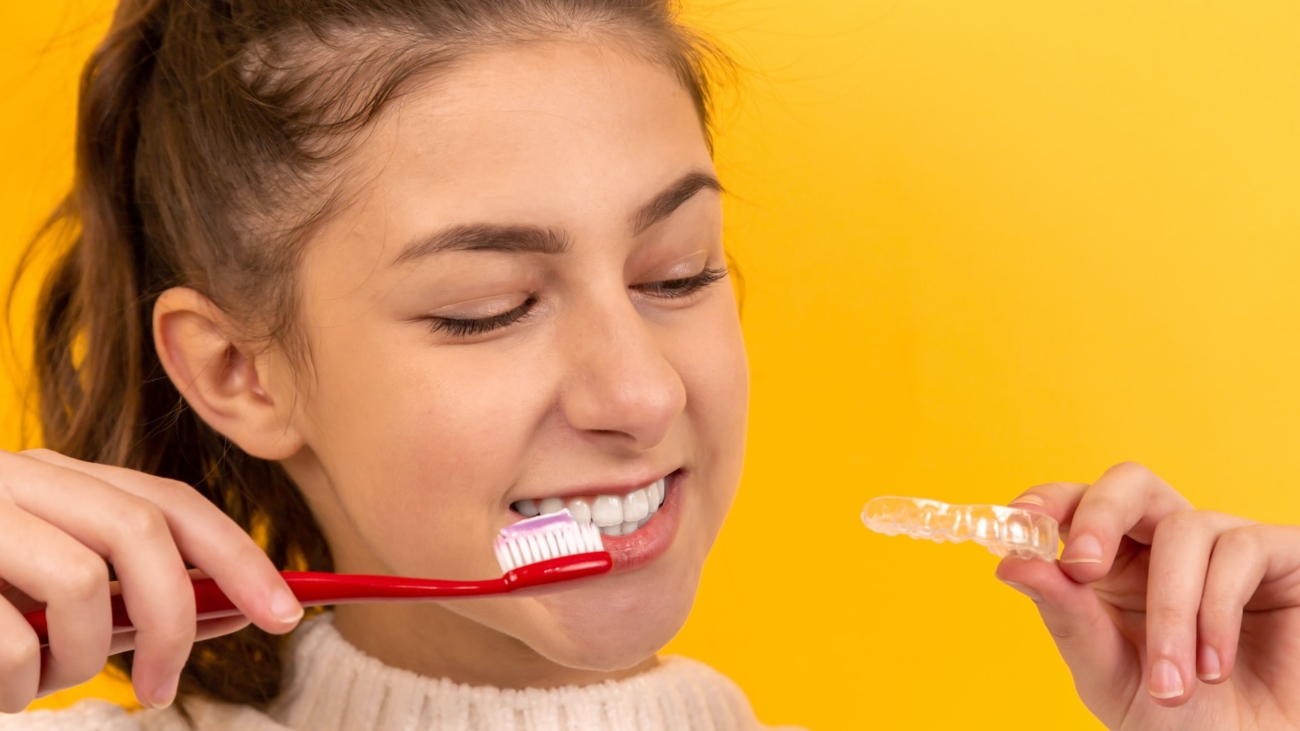Straightening teeth is a popular treatment for a variety of reasons. Whether you’re looking for a brighter smile, to chew your food more easily, or to decrease the risk of tooth decay and other issues, straightened teeth can provide many benefits. At Bay Area Orthodontics, we offer three popular treatment options for straightening teeth: traditional braces, Invisalign®️, and clear braces.
Each of these treatment options has its own set of benefits and drawbacks, so it’s important to consult with your orthodontist to find out which one is right for you.
Invisalign
Invisalign is a treatment that involves wearing a series of clear, custom-made aligners that gradually shift teeth into the desired position. Because they are nearly invisible, Invisalign aligners are much less noticeable than traditional braces. They are also removable, so they won’t interfere with your eating or oral hygiene routines. In addition, the smooth plastic material used for Invisalign aligners won’t irritate gums or cheeks, and there are no wires or brackets to tighten, so you’ll spend less time in the dentist’s chair for adjustments.
Invisalign is a great option for both adults and teens who want to straighten their teeth without metal wires and brackets. It’s best for those who have mild to moderate cases of misalignment, as more complex cases may require traditional braces.
Traditional Braces
Traditional metal braces are still one of the most popular options for straightening teeth today. While they may not be as invisible as clear aligners or ceramic braces, they are often more affordable and just as effective. Metal braces work by using brackets and wires to gradually move teeth into the correct position. The brackets are bonded to the front of the teeth, and the wires are attached to the brackets using tiny rubber bands. As the wires are tightened, they apply gentle pressure to the teeth, moving them into alignment over time.
There are two main types of traditional braces:
- Metal braces: Metal braces are made of high-grade stainless steel and are bonded to the front of the teeth.
- Ceramic braces: These types of braces are made of tooth-colored or clear ceramic. This makes them less obvious than metal braces.
Traditional braces are very strong and can handle more complex cases, perfect for those who require severe misalignment correction or kids who can’t seem to wear their retainers.
Clear Braces
Over the past few years, clear braces have become an increasingly popular option for people looking to straighten their teeth. They are made of clear, durable plastic that is virtually invisible when worn. They work by gradually shifting teeth into the correct position over time. Since clear braces are less noticeable than metal braces, they are perfect for adults who want to straighten their teeth without drawing attention to their treatment.
In addition, clear braces are often more comfortable and require less frequent adjustments than metal braces. They are a great option for treating a wide range of orthodontic issues, including crooked teeth, overbites, underbites, crossbites, and overjets. Clear braces are also ideal for teenage patients when their teeth and jaw are still growing and changing. One disadvantage of clear braces is that they may be more expensive and can vary depending on the severity of the orthodontic issue being treated.
Ready for Straight Teeth?
Straightening your teeth is a big decision that can have a big impact on your smile and your overall oral health. It can be a significant investment of time and money, and it’s not always clear what the best course of action is. However, with the right guidance, straightening teeth can be a big success.
There are a number of different ways to straighten teeth, and the best method will vary depending on your individual needs. Each person’s mouth is different, so it’s important to consult with an orthodontist or dentist to determine which treatment is right for you. They will be able to assess your individual needs and recommend the best course of action.
So, what are your options to achieve a perfect smile? If you’re looking for a quick and easy fix, Invisalign may be the best option for you. For more comprehensive treatment, traditional braces may be the better choice. However, there are many other treatments available as well. If you’re not sure which treatment is right for you, consult with our orthodontist to discuss your options in detail.
At Bay Area Orthodontics, we offer a wide range of teeth straightening options to suit every patient’s needs. Our goal is to help you achieve a healthy, beautiful smile that you can be proud of. Schedule a consultation today to learn more about your options for teeth straightening.


